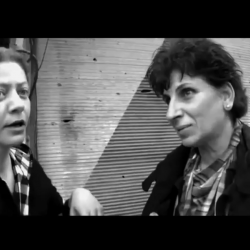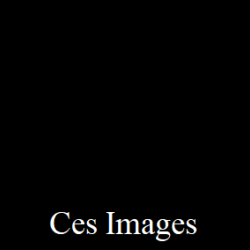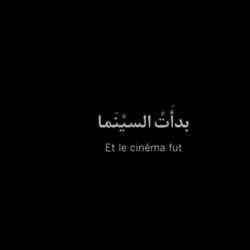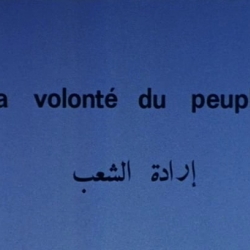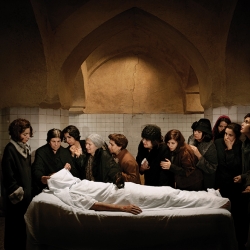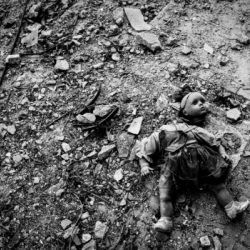Narrating the Egyptian Revolution: Cinema, Memory, Image
28/05/2018
Author: Mazen Helmy
It has been seven years since demonstrators in downtown Cairo first cried out to demand the fall of the regime. The city was both background and witness to this event. It is a witness to the individual’s disappearance within a tsunami of crowds, and the capacity for memory seems to serve as a reel of film, capable of recording millions of hours in endless detail. The truth was timeless, embroiled in spontaneous chanting: “The people want to overthrow the regime.”
In the first moments of the January 25 Revolution in Egypt, no one was concerned with documenting what was going on, as much as they were engaged in the events themselves. Everyone was hurling their subjectivities and individual perspectives beyond Tahrir Square, hoping that this would be a moment of climax that could only be followed by a sense of triumph; the shining moment during which time might come to a standstill.
Events continued to build on themselves, and the Revolution passed through several stages between victory, triumph, and defeat. Eventually the regime began to re-establish its control over the media apparatus and attempted to impose its official version of events. At this point the Revolution had to fight another battle in a different field. The Revolution had to record its account of what had happened in Egypt in the preceding years.
When contemplating the documentation of events like revolutions, one cannot begin from the moment in which they broke out, nor can one separate such events from the conditions that lead to their eruption, or isolate the event from its setting. Here, cinema had a role to play by providing the Revolution for a means of presenting its own narration of events to be set against the state’s official narration; a narrative that identifies with the city itself, as a key element and component of the event. In this capacity, cinema attempts to dismantle the barriers between image and memory, place and revolution, and truth and time.
The struggle which has taken place between the state and the revolutionaries over the narrative and historical account of this event can be seen in two films: The Square (2013) and In the Last Days of the City (2016). The two films are not only similar insofar as they have both received international acclaim at festivals, or even because several of the co-filmmakers worked on both productions. Their primary similarity is actually the position that the state has adopted towards them since they were released. For political reasons cloaked in an administrative pretext, they have been banned from being aired in Egypt. The state claims that there was a failure to complete paperwork shoul have been submitted to a supervisory body by the producers.
In the Last Days of the City: Cairo Falters Before the Explosion
The action of In the Last Days of the City takes place before the Revolution. The film, which premiered at the 66th annual Berlin International Film Festival in 2016, combines documentary and narrative filmmaking. Director Tamer El Said once stated that he would not designate a single category with the film (either narrative or documentary), and that in the end, a film is a film: “To me, a film is to use sound and image in a creative way in order to express a position in the world.”
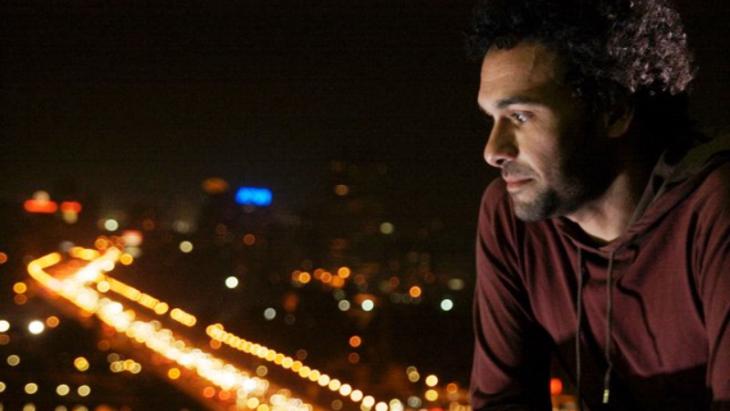
From the first moment, the film establishes a clear identification between the city and each person's individual story. These two components mirror one another and lay the foundation for the film’s visual philosophy of the film; the image as the main creator of the events. The director's style is evident from the beginning in his use of sound to capture silence and in the frequent use of musical build-ups as an element that is intertwined with the image. This gives the documentary scenes a greater weight, and diminishes the prominence of the film’s narrative line.
The story follows the main character, Khaled Abdallah, who is trying to make his debut film about Cairo. There seems to be a clear narrative line that Tamer El Said tries to rely on in the film; tracing the trail and spirit of the city. This may be what caused him to use improvisation in most scenes. His stylistic choices allowed him to work freely, attempting to stay in step with the city’s spontaneity in a screening time of only 118 minutes.
The film’s fiction storyline helps greatly to complement the overall documentary picture with which the film is creating a record of the city. The main character is involved in several crises that support the narrative line which captures and explores the city’s spontaneous nature. These crises range from the hero's attempt to make a film about Cairo, to his shooting of different moments that the city goes through, like joy, sadness and letdown, to dancing in the streets because of a football match, to the demolition of old buildings in the city center, and to scenes of explosions, fires, and sit-ins that filled Cairo at the time.
The film presents the story of a city living its last days. You can see it falter in every scene. The director seems loyal to Mahmoud Darwish's phrase, "Wherever you look, every single thing is ready to explode." The city was on the threshold of something nobody was aware of, but which could be felt in every glance, each sight telling you that every single thing in Cairo is ready to explode.
As the hero searches for an apartment he becomes more and more involved in the city, trying to hold onto its spirit in a deep place that is removed from public events and collective crises. He faces the city as an individual. His personal crises also drives him towards this solo confrontation: his mother is ill and his relationship with his girlfriend is complicated. She decides to leave Egypt and Khaled finds himself more deeply involved in his own individuality, face to face with the city.
In the end, the hero seemed to have nothings but his own memory to try to rely on. He goes to one of the oldest and most famous radio programs in Egypt where his father had worked for many years, Abla Fadilah. There he tries to recover his memory and gain a clearer picture of himself.
Though it was released in 2016, most of the film's scenes were filmed in the years before the revolution. The production process took 10 years. The film shows some of the symptoms of being a debut. According to some critics, it suffers from some technical defects and redundancies, and an apparent attempt to talk about everything. But over time, these same drawbacks may make the film a compelling document of a Cairo that has long since faded away.
What About Individual Memories?
Following the events of September 11, scientists in the field of memory studies at several American universities immediately began recording the people’s accounts of the events. They began the day after the attacks, interviewing some of the people who experienced the incident. After a week they re-interviewed the same people. They found that most of the accounts were identical.
A year later, they interviewed the same people once again, and the interviewees seemed very confident about what they were telling the researchers. However, only 63% of the events they recounted were true. Three years after the incident, they met with them again, and the accuracy of their answers this time was only 57%. This is despite the fact that they all had the same level of confidence that they had the first time they recounted the events.
When we are at the heart of the event, we do not need someone else to tell us anything. Only what we see is the truth. Everything else is obvious forgery. When months and years pass, however, the truth becomes only that which our memories can recall. Everything else remains forgery until we arrive at a point where we need to to be told about the very events that we once experienced, but in which we are no longer embroiled as we once were. Here the truth is determined according to the position taken by the narrative and the telling of events.
The Square: Accounting for the Events Live
The Square offers a straightforward narrative of the events that took place during the years of the Egyptian revolution; a direct and chronological story that begins with the outbreak of demonstrations in the Tahrir Square demanding the departure of the Mubarak regime. The film presents this account by relaying events through three main characters that belong to distinct intellectual, economic, and cultural backgrounds.
The film was banned in Egypt after it premiered at international festivals in 2013. It was also nominated for the Academy Award for Best Documentary Feature in 2014.
The Square picks up where In the Last Days of the City leaves off, taking the city as a bridge to arrive at the details of what was happening. The main link between the two films seemed to be the characters who made them, characters that were trying to account for what has happened in Egypt in recent years. This is evident in one scene from The Square in which Khaled Abdullah, the main character in both films, says “Our story is to be told only by us.”
The Square takes its storyline and pacing from the sequence of the events during the revolution. It tries to move between three timelines: before, during, and after the revolution. This causes the film to move between two film styles, documentary and reportage. The film’s main storylines which provides its narration are documentary, which plunges the viewer plunge into the depths of the main characters’ human story.
The filmmakers sometimes try to present an alternative account of the events, giving the platform to such characters as a strategic analyst (with obvious affiliation to the security services), or even to an army officer who offers a different narrative of the events. In contrast to the long scenes which depict security forces assaulting defenseless citizens, or the scenes in which demonstrators are subjected to murder and abuse by police and military forces, however, these efforts seem more comical than sincere.
The film’s action unfolds according to the development of political changes. The scenes that were filmed during three years of demonstrations and clashes in Egypt depict a clear path that documents moments of victory, hope, death, disappointment, and joy, ending in a state of vigilance.
Throughout the film, none of the obvious signs of defeat appear. Perhaps this was a choice made on behalf of the filmmakers, lest they declare the revolution’s failure pre-emptively. Instead the film arrives at this state of vigilance, wearily watching the fall of the Muslim Brotherhood’s regime following the demonstrations of June 30, the successful military coup, and the subsequent massacre of those demonstrators who rejected the departure of the deposed President Mohamed Morsi. These events have push the city and the film into an atmosphere of intense alertness that seems to portend the Revolution’s absolute defeat.
Image: Inside and Outside of Time
The sun was on its way down when Mubarak’s fall was announced on February 11, 2011. A dim light hovered over the atmosphere of joy in Tahrir Square, making photographs to look glorious, especially when someone climbed a tall pillar in the middle of the square and flew Egyptian flag over the masses of triumphant protesters.
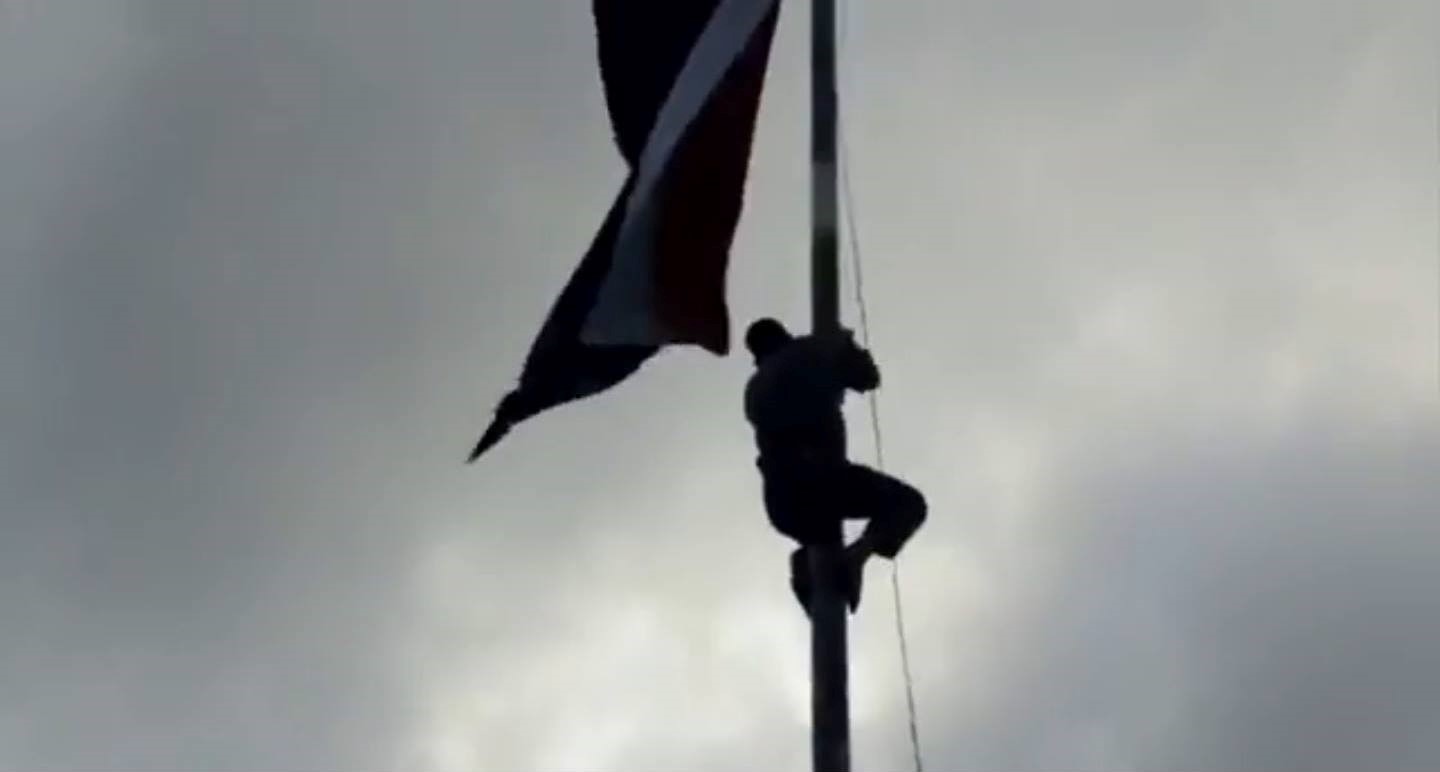
After the military takeover of power in Egypt, Tahrir Square was closed for a long time. After the installation of a 20-meter-long flagstaff in the middle, the refurbished square was opened back up to the public. The glorious image had returned, but this time it was faithful to the ugliness of the scene and the state’s narrative.



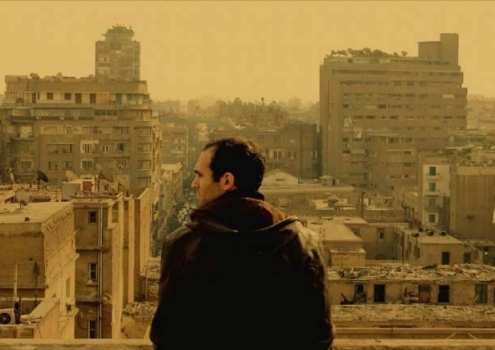




.jpg)

